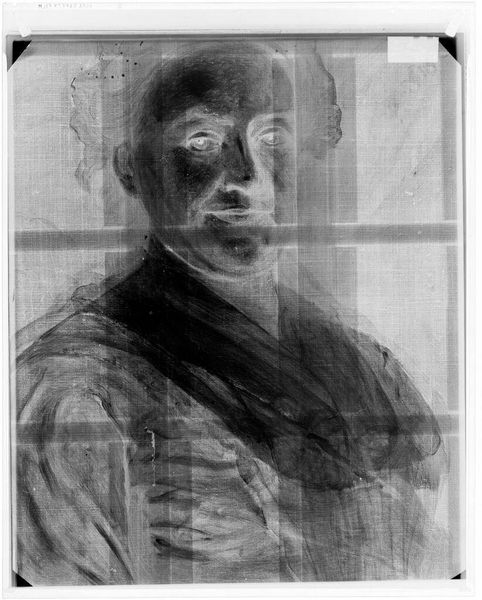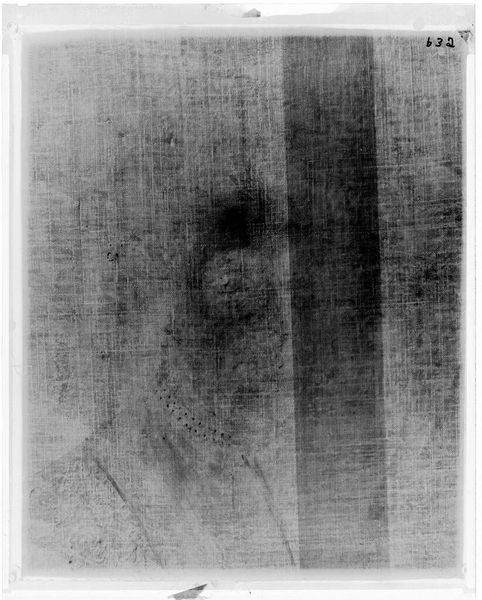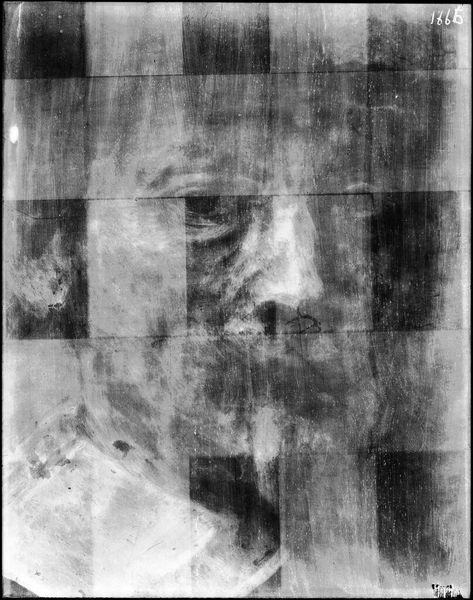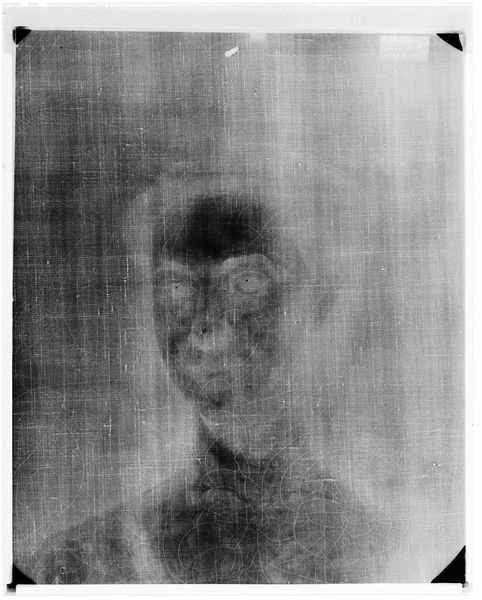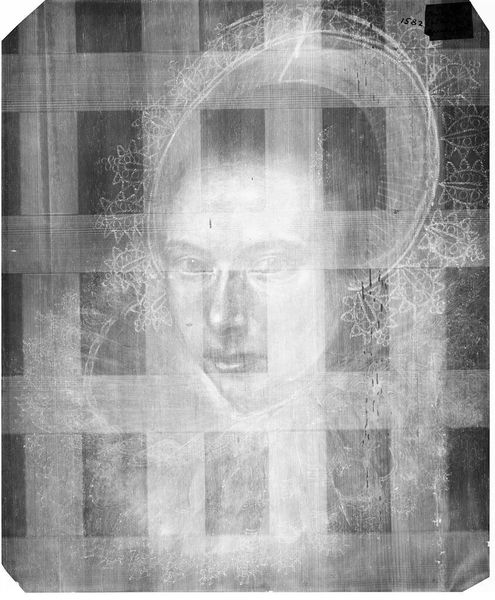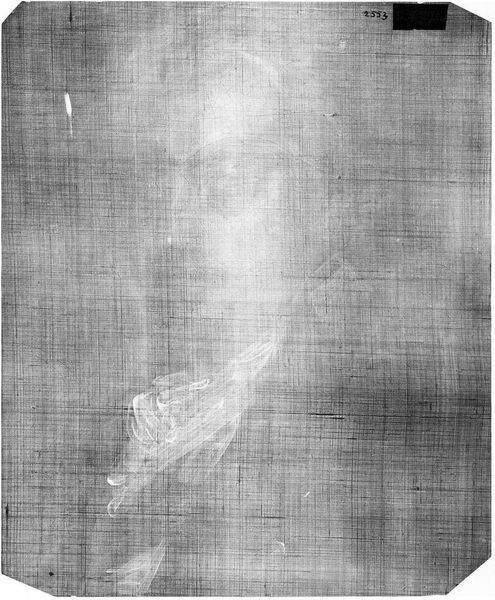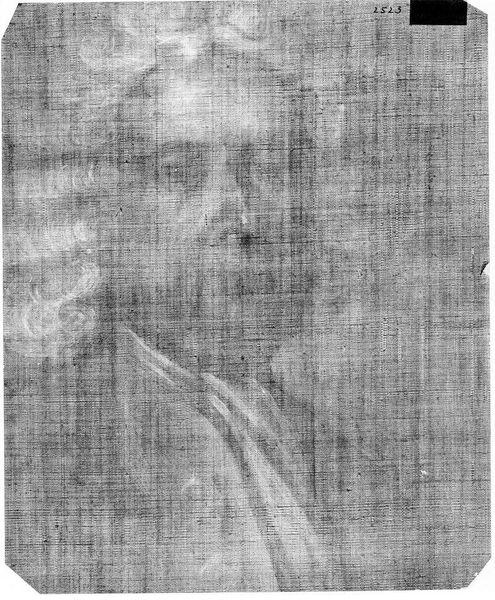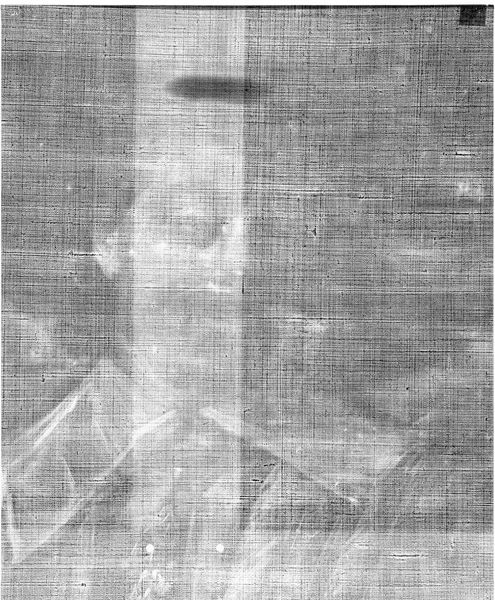
X-radiograph(s) of "Luis Gongora"
Copyright: CC0 1.0
Curator: Here we have an X-radiograph of Diego Velázquez's portrait of Luis de Góngora, residing here at the Harvard Art Museums. Editor: The ghostly image is striking! I see the remnants of brushstrokes and the underpainting. It gives the impression of layers being peeled back. Curator: The X-radiograph allows us to analyze Velázquez’s working process, revealing earlier compositional choices and the materials he used. The portrait, commissioned around 1622, cemented Góngora’s status as a literary figure through visual representation. Editor: Exactly! Consider the materiality. The lead white in the paint renders certain areas opaque, showing how Velázquez built up the form. We are seeing the labor and craft in a new light. Curator: The portrait served as a crucial visual document for Góngora's contemporaries, reinforcing his public image in a period where art and literature were vital political tools. Editor: So true, this isn’t just about aesthetics. It connects to Velázquez's material choices and Góngora's aspirations. Curator: It’s a fascinating glimpse into art's role in solidifying cultural influence. Editor: This x-ray reframes that role, by exposing not just the image, but the means of its making.
Comments
No comments
Be the first to comment and join the conversation on the ultimate creative platform.

